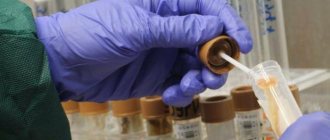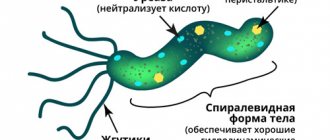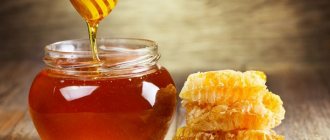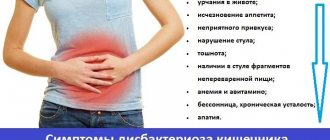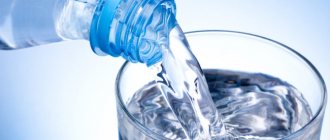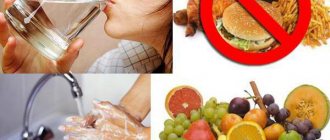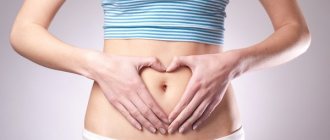Helicobacter pylori causes ulcerative lesions, hyperacid, and in some cases hypoacid gastritis in humans. These spiral-shaped bacteria live in the pylorus of the stomach and duodenum, but are able to move throughout the digestive tract. Like many pathogenic microorganisms, Helicobacter pylori is easily transmitted from person to person. Therefore, when diagnosing bacteria in a patient in a laboratory, gastroenterologists recommend that members of his family also be examined. Only an integrated approach to treatment will help eliminate microbes - taking antacids, antibiotics, bismuth preparations, as well as following a gentle diet.
Helicobacter pylori moves through the gastrointestinal tract with the help of flagella.
Characteristic features of pathogenic bacteria
What is Helicobacter pylori? It is a microorganism, the discovery of which has allowed many people to get rid of gastrointestinal pathologies. But it is not at all easy to destroy a bacterium because of its ability to adapt to the most unfavorable conditions and develop resistance even to modern antibiotics. The spiral-shaped microbe is equipped with flagella. With their help, it is attached to the walls of the gastrointestinal tract, and, if necessary, moves in its cavity. The deficiency of molecular oxygen in no way affects the growth of Helicobacter pylori and their active reproduction.
Warning: “More than half of the world’s population is infected with spiral-shaped bacteria. In people with strong immunity, Helicobacter pylori does not manifest itself in any way. But with a decrease in the human body’s resistance to infectious pathogens, the likelihood of developing ulcers and gastritis increases significantly.”
It is very easy to become infected with pathogenic bacteria - usually one contact with their carrier is enough. Most often, microbes are transmitted in the following ways:
- through a kiss;
- when using the same cutlery;
- through saliva during coughing or sneezing;
- when using a shared towel and other hygiene items.
Having penetrated the digestive tract, Helicobacter pylori immediately attaches to its mucous membrane using flagella. At the same time, it produces urease, a compound that strongly irritates the cells lining the inner wall of the stomach. Trying to neutralize the aggressive substance, the glands begin to produce:
- hydrochloric acid;
- digestive enzymes.
Exactly what the pathogenic microorganisms wanted happens - the pH of the gastric juice rapidly decreases. An environment is formed that is most favorable for the life of spiral-shaped bacteria. But the person’s condition is seriously deteriorating, and treatment for Helicobacter pylori is required. He develops symptoms of dyspeptic disorder:
- heartburn;
- sour belching.
Everyone knows that if gastritis is not treated, it will begin to progress quickly. This is facilitated by Helicobacter pylori, which gradually destroys the mucous membrane of the digestive organs. Caustic hydrochloric acid and pepsin penetrate into microcracks and ulcers, accelerating destructive processes. Actively multiplying, bacteria produce toxic compounds to which the human immune system can react and simply reject areas of the mucous membrane as a foreign element.
Why you need to diet
When a pathogenic microorganism is activated, the gastric mucosa becomes inflamed and when food is consumed that irritates the walls of the organ, therapy is ineffective. In this case, a person’s general well-being deteriorates significantly.
The process of treating gastrointestinal diseases caused by Helicobacter pylori is complex and labor-intensive.
In addition to taking medications, lifestyle and diet adjustments must be made.
Nutrition in the treatment of these pathologies is of no small importance. Without a properly selected menu, it will not be possible to get rid of existing problems.
Clinical picture
Undoubtedly, Helicobacter pylori has long lived in the human gastrointestinal tract. But recently, the number of diagnosed ulcerative lesions and gastritis has increased significantly. Gastroenterologists attribute this not only to the improvement of research methods. The spread of diseases is facilitated by a sedentary lifestyle and frequent consumption of meat products. These factors provoke:
- acid production by the stomach glands;
- activation of Helicobacter pylori.
The presence of pathogenic bacteria in a person’s digestive organs can only be confirmed by the results of laboratory tests. Therefore, you should contact a gastroenterologist if the following symptoms of Helicobacter pylori infection develop:
- pain in the epigastric region not associated with food intake. You often feel hungry 20-30 minutes after eating. In some cases, discomfort is accompanied by pain in the chest;
- dysphagia. A person experiences difficulty and discomfort when swallowing. Sometimes problems arise when trying to take a sip of even ordinary water;
- sour belching. There is a reverse reflux of food into the esophagus, a pungent sour taste is felt in the mouth, and a specific unpleasant odor appears;
- frequent attacks of nausea. Discomfortable sensations often occur after eating food, and a feeling of squeezing in the epigastric region also appears;
- vomit. A negative sign of ulcers and gastritis is typical for people whose diet is dominated by fatty, fried, and meat products;
- flatulence. Excessive gas formation is manifested by: bloating, rumbling and seething, a feeling of fullness;
- weight loss. Sometimes the pain after eating is so severe that a person begins to refuse food and quickly loses weight;
- violation of peristalsis. Indigestion leads to the development of chronic constipation or frequent diarrhea.
Warning: “In some patients, Helicobacter pylori causes the development of gastritis with low acidity. It is characterized by slightly different symptoms than hyperacid pathology. Therefore, you should contact a gastroenterologist for any frequent digestive disorders.”
The bacterium Helicobacter pylori, damaging the mucous membranes of the gastrointestinal tract, directly affects the absorption processes of nutrients and biologically active substances. A deficiency of proteins, fats, carbohydrates, vitamins and microelements negatively affects a person’s appearance. His skin becomes dull, gray, redness and rashes appear on it. An experienced diagnostician, even by appearance, may suspect that the patient has digestive problems. Indirect signs of a person having an ulcer or gastritis are separation of the nail plates and excessive hair loss.
Proton pump inhibitors and bismuth tripotassium dicitrate preparations are included in the therapeutic regimen for Helicobacter pylori eradication
Authorized Products
The diet for HP-associated gastric diseases in the acute period involves the preparation of vegetarian first courses with the addition of well-cooked cereals (buckwheat, semolina, rice, rolled oats) or pureed vegetables. Outside the period of exacerbation, the diet can be expanded with noodle soups with the addition of pureed chicken or turkey. For the second course, prepare steamed or boiled dishes from lean chicken or turkey without skin, lean pork and beef in the form of steamed cutlets, meatballs, souffles, zraz, quenelles.
It is also allowed to eat meat baked in the oven. The diet should include lean fish of white varieties. Rice, semolina, oatmeal, buckwheat, pasta or vermicelli can be used as a side dish. Porridge can be cooked either in water or in diluted milk, but it must be well boiled. Vegetables (carrots, potatoes, beets, cauliflower, young peas) are steamed and then thoroughly pureed, served as a puree. All types of oils (butter and vegetable) are added to ready-made dishes. It is allowed to include dried wheat bread and biscuits in the diet.
Dairy products include: whole milk, non-acidic yogurt and kefir, fresh non-sour cottage cheese. Infrequent consumption of mild, low-fat grated cheese, chicken eggs in the form of an omelet or soft-boiled twice a week is allowed. For appetizers with a non-purified diet, you can eat a salad of boiled vegetables, low-fat herring, doctor's sausage, low-fat ham, and jellied fish in a vegetable broth. As desserts, you can eat dishes based on mashed berries and semolina, baked fruits and sweet berries, marshmallows, non-sour jam, honey, and marshmallows. Drinks include jelly, rose hip decoction, compotes, fruit juices, tea/weak coffee with milk.
Table of permitted products
| Proteins, g | Fats, g | Carbohydrates, g | Calories, kcal | |
Vegetables and greens | ||||
| zucchini | 0,6 | 0,3 | 4,6 | 24 |
| cauliflower | 2,5 | 0,3 | 5,4 | 30 |
| potato | 2,0 | 0,4 | 18,1 | 80 |
| carrot | 1,3 | 0,1 | 6,9 | 32 |
| beet | 1,5 | 0,1 | 8,8 | 40 |
| pumpkin | 1,3 | 0,3 | 7,7 | 28 |
Fruits | ||||
| apricots | 0,9 | 0,1 | 10,8 | 41 |
| watermelon | 0,6 | 0,1 | 5,8 | 25 |
| bananas | 1,5 | 0,2 | 21,8 | 95 |
| melon | 0,6 | 0,3 | 7,4 | 33 |
| nectarine | 0,9 | 0,2 | 11,8 | 48 |
| peaches | 0,9 | 0,1 | 11,3 | 46 |
| apples | 0,4 | 0,4 | 9,8 | 47 |
Berries | ||||
| strawberry | 0,8 | 0,4 | 7,5 | 41 |
| raspberries | 0,8 | 0,5 | 8,3 | 46 |
Cereals and porridges | ||||
| buckwheat (kernel) | 12,6 | 3,3 | 62,1 | 313 |
| semolina | 10,3 | 1,0 | 73,3 | 328 |
| cereals | 11,9 | 7,2 | 69,3 | 366 |
| white rice | 6,7 | 0,7 | 78,9 | 344 |
Bakery products | ||||
| white bread crackers | 11,2 | 1,4 | 72,2 | 331 |
Confectionery | ||||
| jam | 0,3 | 0,2 | 63,0 | 263 |
| jelly | 2,7 | 0,0 | 17,9 | 79 |
| marshmallows | 0,8 | 0,0 | 78,5 | 304 |
| meringues | 2,6 | 20,8 | 60,5 | 440 |
| paste | 0,5 | 0,0 | 80,8 | 310 |
Raw materials and seasonings | ||||
| honey | 0,8 | 0,0 | 81,5 | 329 |
| sugar | 0,0 | 0,0 | 99,7 | 398 |
| milk sauce | 2,0 | 7,1 | 5,2 | 84 |
Dairy | ||||
| milk | 3,2 | 3,6 | 4,8 | 64 |
| kefir | 3,4 | 2,0 | 4,7 | 51 |
| cream | 2,8 | 20,0 | 3,7 | 205 |
| sour cream | 2,8 | 20,0 | 3,2 | 206 |
| curdled milk | 2,9 | 2,5 | 4,1 | 53 |
Cheeses and cottage cheese | ||||
| cottage cheese | 17,2 | 5,0 | 1,8 | 121 |
Meat products | ||||
| boiled beef | 25,8 | 16,8 | 0,0 | 254 |
| beef liver | 17,4 | 3,1 | 0,0 | 98 |
| boiled beef tongue | 23,9 | 15,0 | 0,0 | 231 |
| boiled veal | 30,7 | 0,9 | 0,0 | 131 |
| rabbit | 21,0 | 8,0 | 0,0 | 156 |
Bird | ||||
| boiled chicken | 25,2 | 7,4 | 0,0 | 170 |
| turkey | 19,2 | 0,7 | 0,0 | 84 |
Eggs | ||||
| chicken eggs | 12,7 | 10,9 | 0,7 | 157 |
Fish and seafood | ||||
| salmon caviar granular | 32,0 | 15,0 | 0,0 | 263 |
Oils and fats | ||||
| butter | 0,5 | 82,5 | 0,8 | 748 |
| ghee | 0,2 | 99,0 | 0,0 | 892 |
Non-alcoholic drinks | ||||
| mineral water | 0,0 | 0,0 | 0,0 | — |
| coffee with milk and sugar | 0,7 | 1,0 | 11,2 | 58 |
| black tea with milk and sugar | 0,7 | 0,8 | 8,2 | 43 |
Juices and compotes | ||||
| apricot juice | 0,9 | 0,1 | 9,0 | 38 |
| carrot juice | 1,1 | 0,1 | 6,4 | 28 |
| pumpkin juice | 0,0 | 0,0 | 9,0 | 38 |
| * data is per 100 g of product | ||||
Diagnostics
Take care of your health - save the VKontakte link
Despite the emergence of modern methods for detecting Helicobacter pylori, preference is given to endoscopic methods. They allow the gastroenterologist to assess the degree of damage to the mucous membrane caused by harmful microorganisms. This will be important when drawing up a therapeutic regimen and determining the duration of the course of treatment. Non-invasive tests are used by doctors to monitor treatment of a disease during intermediate stages of examination or to confirm recovery. Diagnosis of Helicobacter pylori can occur in various ways.
Invasive
The time-tested method for diagnosing all pathogenic microorganisms—inoculating biological samples into Petri dishes—has not lost its relevance. In the nutrient medium, Helicobacter pylori begins to actively multiply and form colonies. Based on these signs, one can approximately judge the number of pathogenic bacteria in the human stomach. Laboratory tests make it possible to determine the species of the strain and its sensitivity to antibacterial drugs. Invasive diagnostic methods also include:
- histological studies. After removing biological samples, they are stained and examined under high magnification;
- PRC. Using the polymerase chain reaction, you can not only detect Helicobacter pylori, but also evaluate the degree of its activity. This technique is also used when it is necessary to determine the malignant or benign nature of a neoplasm.
All these studies often take several days, so to quickly identify Helicobacter pylori, the use of a urease test is practiced. The pathogenic microorganism is capable of producing and processing urea, breaking it down into carbon dioxide and ammonia. If a biological sample contains bacteria, the pH of the medium will increase due to the formation of end products of a chemical reaction with basic properties.
Non-invasive
These methods are used to diagnose various pathologies of the gastrointestinal tract in patients, suggesting the presence of spiral-shaped bacteria. Non-invasive techniques include:
- serological tests that use the patient's blood. They allow you to determine antibodies to Helicobacter pylori;
- examination of stool. With their help, antigens of pathogenic bacteria are detected.
A breath test will help quickly identify Helicobacter pylori. For this, the patient will need to drink a urea solution, the molecules of which are labeled with carbon isotopes. When urea is broken down by microbes, the labeled atoms in carbon dioxide enter the bloodstream and leave the body through the lungs. After waiting 30 minutes, the patient is asked to exhale air into a special container. Spectrometric analysis allows detection of labeled atoms.
The antibiotic Clarithromycin is used to kill Helicobacter pylori
Treatment
Before treating for Helicobacter pylori, gastroenterologists assess the damage they have caused, as well as the degree of contamination of the stomach walls. The fact is that for many people they have become part of the opportunistic microflora and do not manifest themselves in any way. Spiral-shaped bacteria can be detected when diagnosing other pathologies. In these cases, when the microorganism peacefully coexists with a person, eradication (removal) is not carried out. Eliminating Helicobacter pylori will require the use of powerful antibiotics, which can cause a decrease in immunity and the development of dysbacteriosis.
Recommendation: “Traditional healers will not help a person get rid of microbes that quickly develop resistance to the most modern antibacterial drugs. The use of infusions and decoctions will only suppress the severity of symptoms, which will allow you to postpone a visit to the doctor and provoke the progression of the pathology.”
Antibiotics
Despite the bacterial origin of Helicobacter pylori, not all antibiotics are suitable for its eradication. The microorganism rapidly develops resistance even to broad-spectrum drugs. Sometimes gastroenterologists have to use several therapeutic regimens and combine medications individually for each patient in order to get rid of the harmful microbe. A certain difficulty lies in the lack of effectiveness of drugs in the acidic environment of the stomach. What antibiotics are used to treat Helicobacter pylori:
- Clarithromycin;
- cephalosporins;
- Azithromycin;
- Levofloxacin.
The best results in the treatment of gastritis and ulcerative lesions are shown by the use of Amoxicillin and its structural analogue Flemoxin. The use of Amoxiclav or Augmentin is practiced. In addition to Amoxicillin, these drugs contain clavulanic acid. This chemical compound prevents bacteria from producing specific enzymes, which helps prevent Helicobacter pylori from developing antibiotic resistance.
Preparations of bismuth tripotassium dicitrate
The most commonly used drug in the treatment of diseases caused by Helicobacter pylori is De-Nol. Thanks to the active ingredient bismuth tripotassium dicitrate, the drug reduces the production of biological compounds that are necessary for the growth and active reproduction of pathogenic microorganisms. Under the influence of De-Nol:
- the permeability of cell membranes is impaired;
- the structure of membranes changes.
Bismuth tripotassium dicitrate enters into chemical reactions with mucosal proteins, the end products of which become high-molecular complexes. They form a strong protective film on the surface of ulcerative lesions, preventing the penetration of caustic gastric juice into the exposed areas. After a course of treatment with De-Nol, the resistance of the mucous membranes of the digestive tract to hydrochloric acid and pepsin increases significantly.
Proton pump blockers
To quickly and effectively treat Helicobacter pylori, the treatment regimen should include proton pump blockers. After taking these drugs, complex biochemical processes are launched in the stomach, which results in a decrease in the production of hydrochloric acid by glandular cells. The most commonly used proton pump inhibitors include:
- Omeprazole (Omez, Ultop);
- Rabeprazole (Hairabezol, Bereta);
- Pantoprazole (Controloc, Nolpaza).
A decrease in the acidity of gastric juice triggers the processes of regeneration of damaged mucous membranes. Such an environment is extremely unfavorable for the growth and reproduction of Helicobacter pylori; it prevents their movement within the digestive tract. Proton pump inhibitors also increase the therapeutic effectiveness of antibacterial drugs. Gastroenterologists take this feature into account and reduce the dose of antibiotics. This has a positive effect on the intestinal microflora and the patient’s immunity.
What to eat
The question of what you can eat will be answered by your general condition. If this is an exacerbation of an ulcer or gastroduodenitis, go to table 1a. Fermented milk products are excluded. The set of ingredients for the day (according to Vorontsov) is as follows:
- Milk – 0.8 liters.
- Sugar – 100 g.
- Cereals – 70 g.
- Fresh fruit (see above) – 200 g.
- Gelatin – 3 g.
- Potato flour – 30 g.
- 3 eggs.
- Butter – 70 g.
Such a strict diet is prescribed until the acute stage of the disease subsides. Then, during treatment, the calorie content gradually increases, and new dishes are added. Tables 1b and 1c follow each other. The menu here is varied. Cream, cottage cheese, potatoes, meat, fish, white bread crackers and so on are added.
Now our readers know what you can eat if you have Helicobacter pylori. And what diet is chosen depends on the patient’s condition. In the old days, it was believed that spicy and cold dishes were contraindicated. And today Israeli doctors claim that strong adjika does not damage the mucous membrane.
Treat Helicobacter pylori, not choose food. Whether you can drink and smoke is an exciting aspect of the diet. Both habits negatively affect the condition of the mucous membrane. At this point, the question of bad habits is considered closed.
The diet depends on the patient’s condition and personal functional characteristics of the body. But you still need to follow some basic rules:
- remove from the diet components that irritate the gastric mucosa, as well as sweets that the bacterium loves;
- chew food thoroughly and eat slowly;
- drink fluids at least 2 liters per day;
- eat frequently (at least 5-6 times a day), so that the portion is not large, use small plates;
- follow a gentle diet for at least a month;
- dishes are served warm. Hot and cold foods are prohibited!
- Food is prepared pureed;
- after eating, the patient does not have a feeling of satiety, heaviness, or bloating. If such sensations are present, the portion is reduced.
MORE ABOUT: How Meryem Uzerli Diet Lost Weight
By following the rules of proper nutrition, the effectiveness of the medicinal effect on Hilicobacter pylori is enhanced and the recovery period is reduced.
The diet prescribed for the treatment of Helicobacter pylari will improve the patient’s health in a short period. The stomach will digest food better, heaviness will be eliminated, pain and bloating will disappear. But it is also important to know how Helicobacter is transmitted in order to prevent the next appearance of bacteria in the future.
Drug therapy, treatment of Helicobacter with folk remedies, proper nutrition give positive results, the patient recovers faster.
If there were extra pounds, if these requirements are met, the excess weight is lost. A person gets used to a healthy lifestyle.
When treating stomach ailments or when the first symptoms of gastrointestinal problems appear, you will have to forget about some of your favorite foods forever. If you violate the recommendations, you may not hope for the effectiveness of therapy.
During treatment of the disease you should not eat:
- Fatty foods that are difficult to digest and involve a large number of enzymes. A weakened stomach is simply not able to cope with such a load.
- Mushroom dishes are also difficult to digest, so they are prohibited in the first place.
- Canned food that is saturated with seasonings and harmful additives will not benefit the body.
- Smoked products, both meat and fish, are also not suitable for feeding the patient, given the high percentage of fat content of such food. Any sausage products should also disappear from the table, as harmful seasonings and preservatives are added to them.
- Sour fruits and berries that increase acidity and harm the mucous membranes. Acid negatively affects the functioning of the digestive system.
- Alcohol-containing drinks.
A doctor should prepare a diet for a patient. The amount of food should always be small. As a rule, the patient is assigned the following menu. On the first day of therapeutic nutrition for Helicobacter pylori, for breakfast you can eat a couple of boiled eggs, a piece of dried bread and drink 150 ml of fruit jelly. For second breakfast, you can enjoy 100 g of buckwheat porridge and boiled veal (80 g). We drink 100 ml of unsweetened tea.
For lunch, it is best to serve 200 ml of warm okroshka or boiled fish with mashed potatoes. We drink fresh berry compote. For an afternoon snack, a sandwich with butter or a little kefir/yogurt is perfect. For dinner, stewed vegetables and boiled chicken fillet are used. We wash down our food with warm milk.
The second day of nutrition during the treatment of Helicobacter pylori: breakfast - one boiled egg and fruit jelly; oatmeal or rice porridge is suitable for the second breakfast. We wash the dish down with coffee and milk. For lunch, you can prepare milk-based soup or low-fat broth, serve mashed potatoes and a baked apple. For an afternoon snack, jelly and baked pear are suitable. For dinner we cook rice porridge and stewed meatballs. Wash it down with warm milk.
Second menu option
In the first 2-3 days, you are allowed to eat only according to the scheme below:
- For breakfast you can boil 2 chicken or 4 quail eggs. Dry a piece of white bread in the oven and wash down your meal with fruit jelly or green tea.
- As a snack, 100 g of non-acidic cottage cheese and rosehip decoction are perfect.
- For lunch we prepare vegetarian puree soup with the addition of potatoes and boiled carrots. Bake turkey meat in the oven with béchamel sauce. We wash down our food with compote made from dried apples and pears.
- For an afternoon snack, we serve banana or pear, or apple/apricot jelly. We wash down the snack with compote from the dryer and eat 1 soft dried apricot.
- For dinner we prepare a steamed cutlet, buckwheat porridge with the addition of a small amount of butter. We cut a salad based on fresh fruits and drink green tea with honey. To prepare the salad, you can cut apples, kiwis, grapes, and pears into small pieces. It is best to season the ingredients with liquid honey and place the container with healthy food in the refrigerator for 20 minutes. After this, the salad is ready to eat. Alternatively, you can use banana, nectarine and grapes as the basis of the dish. Pour yoghurt over chopped fruit.
An hour before bedtime, you can drink 200 ml of low-fat milk.
The process of treating problems with the gastrointestinal tract caused by Helicobacter pylori is very labor-intensive and quite complex, both for the doctor and for the patient. It is worth approaching it comprehensively - in addition to the medication course of treatment, the use of folk remedies, it is recommended to adjust your own lifestyle and diet. It is the diet for Helicobacter pylori that is an important, even mandatory component of the effective and efficient treatment of problems and diseases of the gastrointestinal tract.
MORE ABOUT: How to use bee sap for joints
The diet for Helicobacter pylori gastritis and ulcerative lesions, first of all, should not only be fractional - we eat little and often, but also sparing. Only a doctor prescribes a diet and diet, taking into account the results of the examination and examination of the patient, the course of his illness and its stage.
But regarding the general recommendations of a therapeutic diet, doctors provide the following advice.
- Fried and fatty foods, smoking and pickling, and foods with a lot of spices that can irritate the stomach are not recommended.
- The diet should consist of fresh foods, steamed or boiled, which will be served in a ground form. And all dishes should be eaten warm – not hot or cold.
- All dishes should be chewed thoroughly - do not rush and swallow food in chunks, and you should drink at least 2 liters of water per day.
- It is worth observing the principle of fractional nutrition - we eat often, but in small portions, with an interval of 3 hours between meals.
- It is recommended to follow the diet for at least 1.5-2 months, and after eating the patient should remain a slight feeling of hunger and not have a feeling of heaviness in the stomach.
The therapeutic diet for Helicobacter pylori requires that the menu be based on the principle of fractional meals - 6 meals a day and small portions, no more than 250-300 ml. So in the morning you can serve one soft-boiled egg for breakfast with a piece of white, dried, day-old bread and a glass of berry jelly. For the next meal - boiled, lean veal, as a side dish - porridge, tea with honey. For the 3rd meal - okroshka or boiled or grilled fish, with a side dish of potatoes, dried fruit compote.
If the pathology itself is not complicated, does not have accompanying pathological abnormalities and diseases, the diet will not be bland and tasteless, and will not bring discomfort. And you shouldn’t think that a strict diet is boring and tasteless, when nutrition for Helicobacter pylori can please real gourmets.
Therapeutic regimens
Antibacterial drugs are used not only for relapse of pathology, but also at the stage of remission. It is practiced to use a combination of two antibiotics, which are selected individually for each patient, and one proton pump inhibitor. The duration of medication is determined by the gastroenterologist, taking into account the degree of damage to the mucous membrane. Typically, the therapeutic course is 2-3 weeks, after which laboratory tests are performed to confirm recovery.
Advice: “The intake of drugs for the eradication of Helicobacter pylori cannot be interrupted even for one day. Bacteria will have time to develop resistance and the therapeutic effectiveness of antibiotics will decrease.”
For the treatment of ulcerative lesions and gastritis, the following combination of pharmacological drugs is used:
- proton pump inhibitor (Ultop, Pariet, Nolpaza), Clarithromycin and Amoxicillin;
- bismuth tripotassium dicitrate preparation, Clarithromycin, Amoxicillin;
- Amoxicillin, proton pump inhibitor, tripotassium dicitrate drug.
The fourth therapeutic regimen is used when the first three are unsuccessful. It consists of any proton pump inhibitor, a tetracycline antibiotic, a drug with bismuth tripotassium dicitrate and an antimicrobial drug (Metronidazole, Trichopolum).
Pomegranate
A separate conversation will be about the pomegranate. Its peel is used in this context. But the diet for the treatment of Helicobacter pylori is diluted with natural juice. Pomegranate juice has antimicrobial effects
Anyone who eats pomegranate rarely suffers from diarrhea. Studies proving this were conducted on rats with artificially induced diarrhea (using castor oil). The aqueous extract contains a host of useful substances:
- Tannins.
- Alkaloids.
- Flavonoids.
The bark of the plant and the peel of the fruit are used by doctors to treat dysentery, bronchitis, diarrhea, and worms. This reduces the risk of cardiovascular diseases. A positive effect of the juice on the level of “good” cholesterol in the blood was noted.
Prevention
To avoid becoming infected with pathogenic bacteria, you must follow basic hygiene rules: wash your hands before eating and after each visit to the toilet, do not use other people’s towels, toothbrushes, or dishes. Prevention of Helicobacter pylori involves promptly going to a hospital if signs of gastrointestinal diseases occur. Therapy carried out in the initial stages of pathologies helps speed up recovery and avoid the development of negative complications.
Gastroenterologists recommend that patients give up bad habits not only during treatment. After the mucous membranes of the gastrointestinal tract have healed, you need to stop drinking alcohol and smoking. A course of vitamins and microelements will help increase the body's resistance to Helicobacter pylori.
Harmful bacteria destroy the gastric mucosa, disrupt the intestinal microflora, and provoke the development of dangerous diseases of the digestive system. The health consequences are extremely unpleasant and intensive therapy is required. Before Helicobacter pylori is detected, a person is tormented by alarming symptoms of the gastrointestinal tract.
Diet for Helicobacter pylori - menu, what you can and cannot eat, features
Quick page navigation
Helicobacter pylori is a bacterium that causes ulcerative and inflammatory processes in the stomach and duodenum.
An insidious pathogen is capable of surviving and multiplying in the aggressive environment of the stomach, causing serious damage to the body and causing digestive problems (read more about what Helicobacter pylori is and tests for detection).
The main signs of Helicobacter pylori infection:
- pain in different areas of the epigastrium of various types (aching, paroxysmal, spasmodic, intense, periodically occurring and constant);
- belching, sour taste in the mouth after eating;
- nausea, vomiting;
- flatulence (intensive gas formation in the intestines, seething and rumbling in the stomach);
- black stool (a sign of internal bleeding);
- weakness, loss of performance, lack of appetite.
If these signs occur, you should immediately contact a gastroenterologist, who will examine the patient and prescribe the necessary laboratory tests, as well as establish an accurate diagnosis and prescribe appropriate therapy and diet.
Treatment of peptic ulcers and gastritis involves complex therapy, including the use of antibacterial agents and other dosage forms, as well as the use of special gentle nutrition. It should be noted that Helicobacteriosis is treated all over the world with a complex of antibiotics, which can only be prescribed by a competent specialist.
Without following a diet, inflammatory diseases of the gastrointestinal tract cannot be cured, so the patient’s healing depends on the strict adherence to all recommendations of the gastroenterologist and nutritionist.
Treatment table 1, 1a and 1b is recommended for patients with gastritis and peptic ulcers, and this is the basis of recovery. Depending on the stage of inflammation, the degree of development of the disease and the patient’s condition, the doctor gives clear individual nutritional recommendations.
What is Helicobacter pylori
This gram-negative bacterium destroys the epithelium of the mucous membrane of the digestive organs. Helicobacter pylori not only penetrates the stomach, but also maintains viability in an acidic environment, and in addition, multiplies rapidly and affects the gastrointestinal mucosa. The harmful bacterium Helicobacter pylori is common in almost every organism, but its aggressive influence is preceded by a number of pathogenic factors. Helicobacter pylori is considered a family health problem, since germs are quickly transmitted through household contact and beyond.
Diet for Helicobacter pylori: allowed and prohibited foods
The first, important step in adapting nutrition to the diet for Helicobacter pylori is awareness of the principles of healthy eating. Despite the fact that taste cells often encourage the consumption of unhealthy foods that are burdensome for the body, the role of nutrition should be exactly the opposite - the diet for chylactobacter is designed to save the body and benefit it.
What are the principles of a healthy diet when infected with the gastric bacterium Helicobacter pylori (they are also recommended for healthy people):
- Consume food calmly - this is a simple step that is important for the body. Emotions accompanying food intake affect overall digestion.
- It is recommended to eat little by little more often. Eating large portions unnecessarily burdens the body, depriving it of energy spent on prolonged digestion of food. When the stomach is colonized by the bacterium Helicobacter pylori, the diet is based on 5 meals a day so that the body constantly gradually digests food without being burdened.
- Foods that cause stomach problems - hot, spicy, fatty foods - are excluded from the diet. It is advisable to stop smoking and drinking strong coffee.
- Don't create a weakened environment. The bacterium Helicobacter pylori can live in the stomach without causing problems for years. The problem occurs when it multiplies in a weakened stomach that does not produce enough gastric juice and is too busy digesting heavy food. This creates good conditions for the growth of the pathogen and facilitates damage to the gastric mucosa. When supporting digestion with quality enzymes (eg apple cider vinegar), the stomach environment will not be suitable for the growth of H. pylori.
What to include in your diet?
If you develop a Helicobacter Pylori infection, it is important to be careful when choosing foods. It is recommended to use boiling, steaming, and stewing as a cooking method. Products included in the diet for Helicobacter pylori:
Products included in the diet for Helicobacter pylori:
- white meat;
- broccoli;
- fish;
- vegetable oil;
- oat, wheat flakes;
- dark bread;
- mineral waters with high sodium content;
- foods high in fiber and vitamin C.
Organic, unfiltered apple cider vinegar, preferably with a little sediment at the bottom of the bottle, is a suitable natural remedy for improving digestion, stomach acid production
Its consumption requires caution in the later stages of gastric ulceration - it is recommended to wait until the inflammation of the mucous membrane subsides with the use of vinegar. At this time, it is better not to unnecessarily stimulate the formation of juice and not to burden the stomach.
Although its correct formation is important in the treatment of Helicobacter pylori infection, it can contribute to damage to the mucosa, weakened by inflammation, ulceration
Probiotics, substances with antibacterial and anti-inflammatory properties, will help support digestion.
What to give up?
In addition to following the principles of a healthy diet, a diet for Helicobacter pylori involves the complete exclusion of a number of foods from the diet.
It is recommended to limit foods that irritate the gastrointestinal tract and cause flatulence. It includes:
- sweet carbonated drinks;
- drinks with a high content of carbon dioxide, caffeine;
- hot sauces;
- raw vegetables (tomatoes, onions, garlic, peppers, cucumbers);
- fatty, smoked meat;
- salted nuts;
- White bread;
- fruits that are too sweet.
It is not recommended to use a lot of fats or frying when cooking. It is advisable to limit salting and avoid eating too hot or cold food.
How is Helicobacter pylori transmitted?
Doctors have not been able to determine the exact routes of transmission of the pathogenic infection, but they confirm that you can become infected through oral, contact, fecal-oral, and household contact. If a sick person kisses a healthy person, he will become infected with a dangerous bacterium, which can provoke gastritis, ulcers, and other inflammatory processes of the gastrointestinal tract. After infection with Helicobacter pylori, the patient does not immediately begin to get sick: it takes time to complete the incubation period
Here are a number of common options for how Helicobacter is transmitted to humans:
- in case of violation of aseptic rules regarding medical equipment;
- by airborne droplets - when sneezing, coughing, watery eyes, during a conversation with an opponent;
- when using the same utensils with the patient;
- in case of violation of personal hygiene rules;
- from other household members infected in a known way previously;
- through vegetables, fruits, and other contaminated objects;
- upon physical contact.
Helicobacter pylori - symptoms
At first, the bacterium does not detect itself in the body, but during the incubation period it grows, multiplies, and releases intoxication products that damage the epithelial layer. Symptoms of Helicobacter pylori become pronounced, resemble signs of poisoning, and require timely diagnosis and therapeutic measures. It is important to pay attention to the following changes in general well-being:
- bowel dysfunction – chronic diarrhea or constipation;
- allergic skin rashes;
- hair thinning;
- bad breath;
- fragility of the nail plates and other signs of vitamin deficiency;
- pain in the stomach after a meal;
- all other signs of dyspepsia.
Diet and nutrition in the treatment of Helicobacter pylori in the stomach
The use of antibiotics should not be exaggerated, as this may irritate the stomach, hence leading to further complications. There is a more gentle way - a diet for Helicobacter pylori.
It involves the exclusion of fried, fatty foods. Stewed white meat, fish, and vegetables are recommended. Legumes that cause flatulence should also be avoided. Alcoholic drinks are not allowed.
Include garlic and broccoli in your diet for Chyloribacter pylori.
For effective treatment, it is advisable to avoid stress and provide the body with enough sleep.
If complications occur or symptoms worsen, consult a doctor. Left untreated, the disease can in some cases lead to stomach cancer.
Helicobacter pylori - treatment
If you respond to alarming symptoms in time, you can cure this disease and provide reliable and affordable prevention of active bacteria. If you listen to your doctor, the treatment regimen for Helicobacter pylori includes taking antibiotics, using agents to restore the affected mucous membrane, a therapeutic diet, and vitamins for the immune system. It’s worth clarifying right away that this bacterium is highly resistant to many antibiotics, so superficial self-medication is completely excluded.
Eradication of Helicobacter pylori
If a bacterium is detected, a set of medications and procedures are prescribed to quickly stop further development. This eradication therapy of Helicobacter pylori is highly effective with the correct choice of antibiotics and has a number of significant advantages. Before treating Helicobacter pylori infection in the stomach, it is necessary to select the optimal regimen. More often it looks like this:
- Antibiotic Clarithromycin for 7 days.
- Antibacterial drugs Tinidazole, Trichopolum, Amoxicillin for a weekly course.
- Proton pump inhibitors Rabeprazole, Omez for a week.
Since the body develops increased resistance of pathogenic flora to antibiotics, it is not easy to get rid of pathogenic bacteria with antibiotics. It is necessary to first perform a test for sensitivity to the drug, take the full course for Helicobacter, and not violate the prescribed sequence of actions.
How to treat Helicobacter pylori with medication
Doctors first determine the cause of the pathological process, then eliminate it and prescribe effective treatment. If treatment for Helicobacter pylori is started untimely or is prescribed incorrectly, serious complications that occur in the human body may follow. Below are the most common medical directions against Helicobacter pylori:
- Eradication, combining in one prescription three medications Amoxicillin, Rabeprazole, Clarithromycin.
- In the absence of a sustainable therapeutic effect, it is indicated to replace these medications with Rabeprazole, Metranidazole, Bismuth subsalicylate, Tetracycline.
- Oral intake of probiotics is mandatory for the speedy restoration of the epithelium of the mucous membrane.
Diet for Helicobacter pylori
Special requirements are indicated only for internal bleeding; in other clinical situations, nutrition should be complete, balanced, and healthy. The diet for Helicobacter pylori is aimed at maintaining digestive functions and speedy restoration of the affected gastric mucosa. If Helicobacter pylori progresses, it is important to find out what kind of bacterium it is first, and only then will you have treatment and a diet that excludes the following foods from your daily diet:
- alcohol;
- fatty and fried foods;
- smoked meats and preserves;
- confectionery;
- spices and pepper;
- mushrooms and first (fatty) broth;
- coffee Tea.
If you have Helicobacter, you are allowed to consume low-fat soups, milk porridges, lean meat and fish, vegetables, milk and berry smoothies, and medicinal decoctions. With a properly planned menu, the manifestation of a relapse will be relegated to the background, and the number of pills consumed will be reduced several times. At home, you can always use alternative medicine recipes against dangerous bacteria.
Sample menu
For diseases of the gastrointestinal tract, nutrition should be varied. You should not eat the same thing twice a day or two days in a row.
Possible breakfast options while following a therapeutic diet:
- Viscous milky oatmeal and herbal tea.
- Semolina porridge with jam and green tea.
- Protein omelet with milk and rosehip decoction.
- Rice porridge in milk with a piece of butter, linden decoction.
- Low-fat cottage cheese with apple without skin.
- A soft-boiled egg, a slice of toasted bread with butter, carrot juice.
- Buckwheat porridge with milk, herbal tea.
Possible snack options (brunch):
- Light yogurt with banana, dry biscuits.
- Baked pumpkin with apples.
- Rice pudding with fruit.
- Cottage cheese with honey.
- Egg soufflé and sea buckthorn fruit drink.
- Fruit puree made from apple, pear and banana.
- Half a pear and a glass of kefir.
Possible lunch options:
- Cabbage broth with croutons, steamed chicken cutlet, jelly.
- Pumpkin and carrot soup with a piece of dried bread, baked cod with pasta, compote.
- Potato soup, boiled chicken breast with a side dish of vegetables, herbal tea.
- Slimy oatmeal soup, mashed potatoes with stewed veal, chicory drink.
- Zucchini soup, fish balls with boiled rice, fruit juice.
- Buckwheat soup, turkey cutlet with pasta, compote.
- Fish soup, vegetable stew with chicken, a slice of dried bread, jelly.
Possible options for a second snack (afternoon snack):
- Ryazhenka with biscuits.
- Yogurt and half an apple.
- Cottage cheese with cookies.
- Banana and kefir.
- Dry biscuit.
- Curd casserole with jam.
- Semolina pudding with honey.
Possible dinner options:
- A piece of baked fish, boiled beets.
- Boiled breast without skin, potato salad.
- Fish soufflé with spinach.
- Baked zucchini with herbs.
- Vinaigrette with vegetable oil.
- Rice milk porridge.
- Potato casserole.
Helicobacter pylori - treatment with folk remedies
For Helicobacter, traditional treatment recipes are in no way inferior in effectiveness to drug intensive therapy methods. It is necessary to choose the right medicine against the bacterium, first approve its use by a specialist, do not violate daily instructions, and do not overestimate the dosage. Before treating Helicobacter in the stomach with folk remedies, it is important to clarify the absence of an allergic reaction to herbal components and minimize the risk of side effects. Here are some good recipes:
- Combine chamomile, celandine, yarrow and St. John's wort in equal quantities. Prepare a decoction using the classic method - 2 tbsp. l. raw materials 500 ml boiling water. Take after eating up to 3 times a day. Prepare a fresh portion of this medicine each time.
- Grind the calamus root, then 2 tbsp. l. steam the raw materials and leave in 0.5 liters of boiling water. Take it internally according to the same principle. The patient is guaranteed positive dynamics with increased activity of Helicobacter.
- Dandelion, apple or pear flowers act on the same principle, productively complement antibacterial therapy, have no drug interactions, and destroy the Helicobacter pylori bacterium.
Menu option for the week
Choosing the right menu for the week is quite simple. The main thing is that it contains dairy products, cereals, soups and healthy drinks. In this case, gastric juice will be produced normally, and bacterial activity will begin to be suppressed.
- Breakfast. Boiled egg, bread and berry-based jelly.
- Lunch. Porridge with boiled veal and tea with honey.
- Dinner. Boiled lean fish, potatoes and dried fruit compote.
- Afternoon snack. Yogurt and apple.
- Dinner. Chopped fruit jelly, dried apricots and green tea.
- Second dinner. Boiled lean meat, pasta, bread and milk.
- Breakfast. A couple of eggs, oatmeal with milk and tea.
- Lunch. Milk.
- Dinner. Potato and carrot soup, boiled chicken with buckwheat and jelly.
- Afternoon snack. Boiled fish, chopped and boiled green peas.
- Dinner. Milk with bread.
- Second dinner. Rice, grilled fish and tea.
- Breakfast. Buckwheat with milk, bread and tea.
- Lunch. Cottage cheese with dried fruits and honey.
- Dinner. Low-fat boiled fish, potato soup, pre-boiled carrots and jelly.
- Afternoon snack. Compote and bread.
- Dinner. Baked fish and potatoes.
- Second dinner. Yogurt and bread.
- Breakfast. Rice, green tea and bread.
- Lunch. Bread with grilled meat and kefir.
- Dinner. Vegetable soup with meatballs, stewed cabbage.
- Afternoon snack. Banana.
- Dinner. Oatmeal, steam cutlet, tea and peeled apple.
- Second dinner. Bread and milk.
- Breakfast. Steamed omelette, jelly and bread.
- Lunch. Rice and rosehip broth.
- Dinner. Meatless soup, boiled fish and dried apple compote.
- Afternoon snack. Fruit jelly, dried apricots and tea.
- Dinner. Buckwheat, steam cutlet, fresh pear.
- Second dinner. Kefir.
- Breakfast. Oatmeal, boiled egg and chicory drink.
- Lunch. Semolina pudding.
- Dinner. Soup based on potatoes, cauliflower and with the addition of carrots, toast, steamed zucchini and meat, jelly.
- Afternoon snack. Ryazhenka with biscuits.
- Dinner. Baked fish, mashed potatoes, boiled beets and herbal tea with honey.
- Second dinner. Milk.
Analysis for Helicobacter pylori
The infection can only be determined through laboratory testing. By performing an analysis for Helicobacter pylori, you can make a final diagnosis and predict the clinical outcome for the patient. The determining biological fluid for examination is considered to be blood, a smear of the mucous membrane is considered secondary. From a single portion of blood, the presence of specific antibodies formed by immunity against dangerous bacteria is determined. After confirming the nature of the disease, intensive therapy with conservative methods should follow immediately.
Стильные реальные шлюхи Пермь, сладкие и ухоженные, они такие игривые и молоденькие, что невозможно отказаться от удовольствия. Все красавицы к твоим услугам. Встречаются исключительно с благодарными и благородными мужчинами, реальные шлюхи Пермь, очень любят общаться с интересными людьми. Каждая анкета проститутки содержит подробную информацию и номер телефона.
